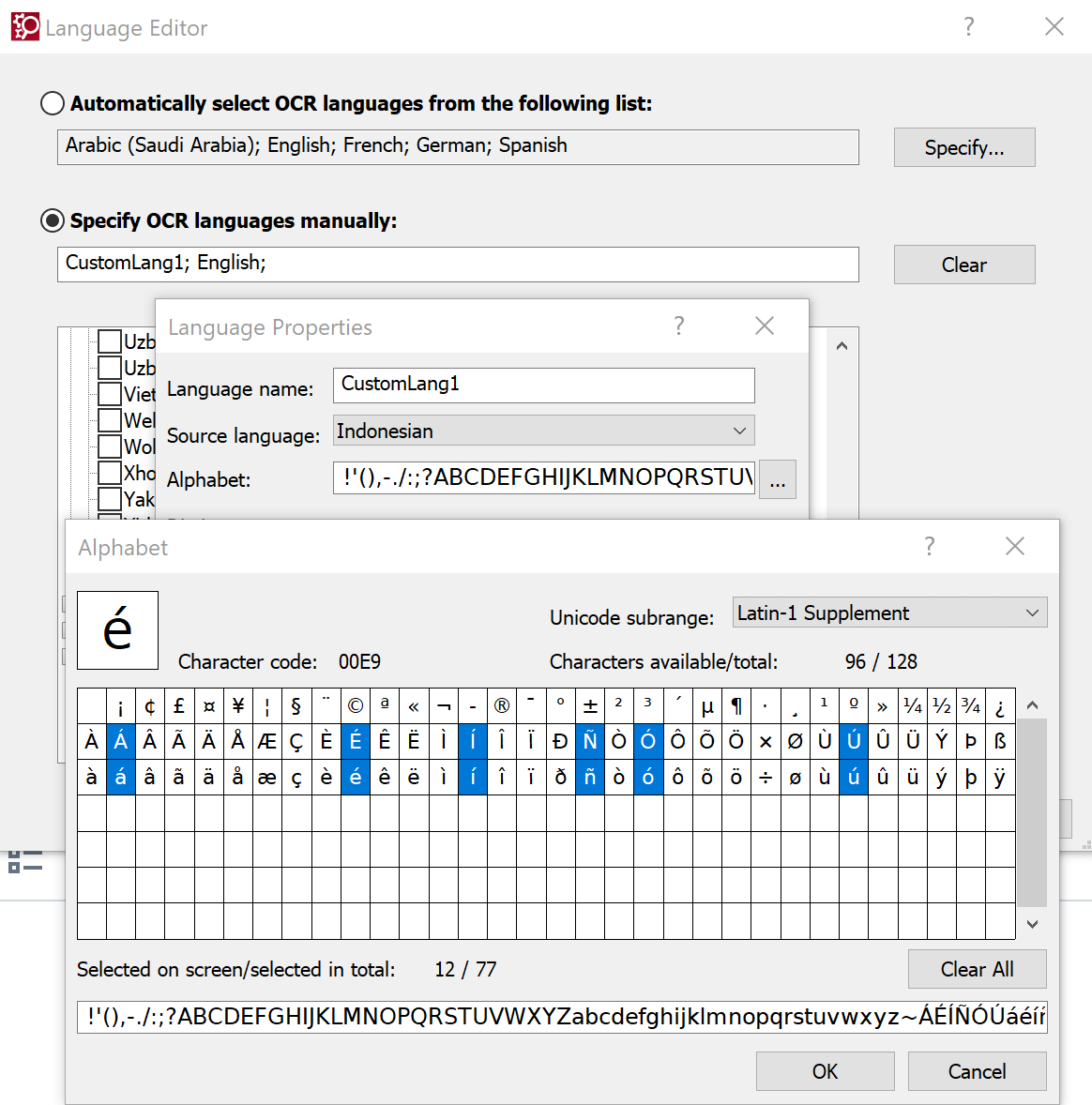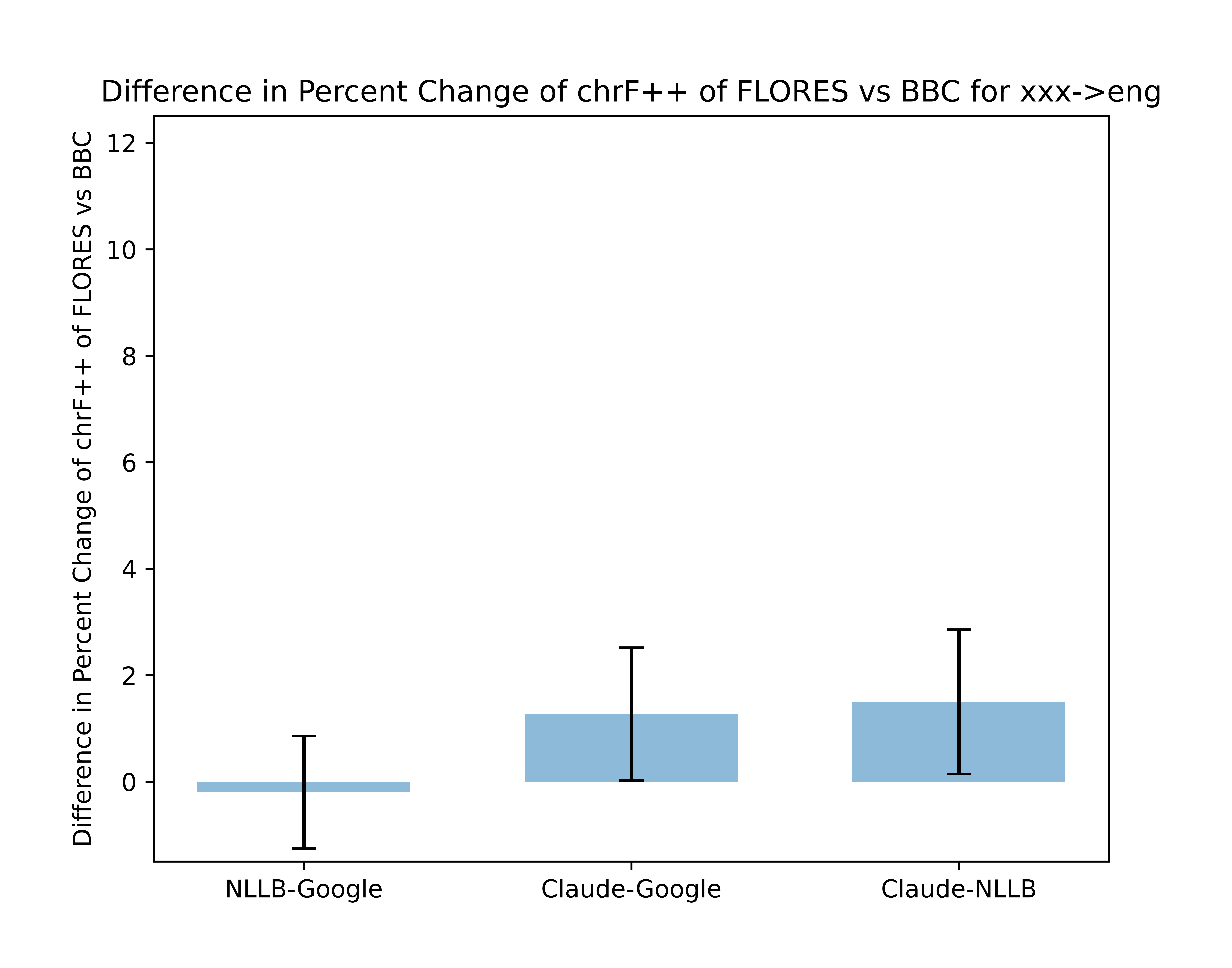LLM-Assisted Rule Based Machine Translation for Low/No-Resource Languages

0

Sign in to get full access
Overview
- This research paper proposes a novel approach to machine translation for low-resource languages using a combination of large language models (LLMs) and rule-based translation methods.
- The key idea is to leverage the language understanding capabilities of LLMs to assist in the rule-based translation process, addressing the challenges of limited training data and language-specific rules.
- The paper explores various techniques to incorporate LLM-based knowledge into the rule-based translation pipeline, aiming to improve the quality and robustness of translations for low-resource language pairs.
Plain English Explanation
Machine translation, the process of automatically translating text from one language to another, is a critical technology for overcoming language barriers and enabling global communication. However, developing high-quality machine translation systems for low-resource languages, or languages with limited available data for training, has been a longstanding challenge.
This research paper presents a new approach that combines the strengths of large language models (LLMs) and rule-based machine translation. LLMs are AI models that have been trained on vast amounts of text data, giving them a deep understanding of language. The researchers in this paper propose using these LLMs to assist in the rule-based translation process, which relies on a set of predefined linguistic rules to translate text.
By integrating the language knowledge from LLMs into the rule-based translation system, the researchers aim to overcome the limitations of traditional rule-based approaches, which can struggle with the complexities and nuances of low-resource languages. The LLM-assisted rule-based system can leverage the LLM's broad understanding of language to better apply the translation rules, resulting in higher-quality translations even when training data is scarce.
The paper explores different techniques for incorporating LLM-based knowledge into the translation pipeline, such as using the LLM to suggest appropriate translation rules or to refine the output of the rule-based system. Through careful experimentation, the researchers demonstrate the effectiveness of their approach in improving translation quality for low-resource language pairs.
This research represents an important step towards more robust and versatile machine translation systems, particularly for languages that have traditionally been underserved by existing translation technologies. By combining the strengths of rule-based and data-driven approaches, the researchers have developed a novel solution that can help bridge the gap in machine translation capabilities for low-resource languages.
Technical Explanation
The key technical contribution of this paper is the development of an LLM-assisted rule-based machine translation (LLM-RBMT) framework for low-resource language pairs. The researchers hypothesize that by integrating the language understanding capabilities of large language models (LLMs) into a rule-based translation system, they can overcome the limitations of traditional rule-based approaches and produce higher-quality translations even in the absence of large parallel corpora.
The proposed LLM-RBMT system consists of three main components:
- Rule-based Translation Module: This module applies a set of predefined linguistic rules to translate text from the source language to the target language.
- LLM-based Suggestion Module: This module uses an LLM to provide suggestions and refinements to the rule-based translation, leveraging the LLM's broad understanding of language.
- LLM-based Ranking Module: This module employs the LLM to evaluate and rank the candidate translations generated by the rule-based and LLM-based suggestion modules, selecting the most appropriate translation.
The researchers evaluate their LLM-RBMT approach on several low-resource language pairs, including Gujarati-English, Amharic-English, and Quechua-Spanish. They compare the performance of the LLM-RBMT system to both pure rule-based and pure neural machine translation (NMT) approaches, demonstrating significant improvements in translation quality, as measured by standard metrics such as BLEU and chrF.
Through detailed analysis, the researchers identify several key factors that contribute to the success of the LLM-RBMT framework, including the ability of the LLM to:
- Suggest appropriate translation rules based on the source language context
- Refine the output of the rule-based system to better capture linguistic nuances
- Rank candidate translations to select the most semantically and grammatically correct option
The paper also discusses the limitations of the proposed approach, such as the reliance on high-quality LLM models and the potential challenges in adapting the framework to highly divergent language pairs. The researchers suggest future research directions, including exploring alternate LLM integration strategies and investigating the scalability of the LLM-RBMT approach to a wider range of low-resource languages.
Critical Analysis
The research presented in this paper represents a promising approach to addressing the longstanding challenge of machine translation for low-resource languages. By leveraging the strengths of both rule-based and data-driven (LLM-based) methods, the proposed LLM-RBMT framework overcomes the limitations of traditional rule-based systems, which can struggle with the complexities and nuances of low-resource languages.
One of the key strengths of this work is the systematic evaluation of the LLM-RBMT system across multiple low-resource language pairs, demonstrating its consistent performance improvements over both pure rule-based and pure NMT approaches. This rigorous empirical evaluation lends credibility to the proposed techniques and provides valuable insights into the factors that contribute to the success of the LLM-RBMT approach.
However, the paper also acknowledges several limitations and areas for further research. For instance, the reliance on high-quality LLM models may limit the accessibility and deployability of the LLM-RBMT system, particularly in resource-constrained settings. Additionally, the effectiveness of the approach for highly divergent language pairs, where the linguistic rules and LLM-based knowledge may be less transferable, remains an open question.
Future research could explore techniques to make the LLM-RBMT framework more robust and adaptable, such as investigating methods to fine-tune or distill the LLM models for specific low-resource language pairs. Exploring alternate integration strategies between the rule-based and LLM-based components, as well as incorporating additional sources of linguistic knowledge, may also help improve the system's performance and generalization capabilities.
Overall, this research paper presents a novel and promising approach to low-resource machine translation that merits further investigation and refinement. By combining the strengths of rule-based and data-driven methods, the LLM-RBMT framework offers a valuable contribution to the ongoing efforts to develop more inclusive and accessible machine translation technologies for underserved languages.
Conclusion
This research paper proposes a novel LLM-assisted rule-based machine translation (LLM-RBMT) framework to address the challenges of low-resource language translation. By integrating the language understanding capabilities of large language models (LLMs) into a rule-based translation system, the researchers have developed a hybrid approach that can produce higher-quality translations even in the absence of large parallel corpora.
The empirical evaluation of the LLM-RBMT system on several low-resource language pairs demonstrates its effectiveness in outperforming both pure rule-based and pure neural machine translation approaches. The key strengths of the proposed framework lie in the LLM's ability to suggest appropriate translation rules, refine the output of the rule-based system, and rank candidate translations to select the most suitable option.
While the paper acknowledges certain limitations, such as the reliance on high-quality LLM models and the potential challenges in adapting the framework to highly divergent language pairs, the overall approach represents an important step towards more robust and versatile machine translation systems for low-resource languages. Future research directions could focus on improving the adaptability and accessibility of the LLM-RBMT framework, as well as exploring alternate integration strategies and incorporating additional sources of linguistic knowledge.
By combining the strengths of rule-based and data-driven methods, this research has the potential to contribute to the ongoing efforts to develop more inclusive and accessible machine translation technologies, helping to bridge the gap in language capabilities and facilitate global communication.
This summary was produced with help from an AI and may contain inaccuracies - check out the links to read the original source documents!
Related Papers


0
LLM-Assisted Rule Based Machine Translation for Low/No-Resource Languages
Jared Coleman, Bhaskar Krishnamachari, Khalil Iskarous, Ruben Rosales
We propose a new paradigm for machine translation that is particularly useful for no-resource languages (those without any publicly available bilingual or monolingual corpora): LLM-RBMT (LLM-Assisted Rule Based Machine Translation). Using the LLM-RBMT paradigm, we design the first language education/revitalization-oriented machine translator for Owens Valley Paiute (OVP), a critically endangered Indigenous American language for which there is virtually no publicly available data. We present a detailed evaluation of the translator's components: a rule-based sentence builder, an OVP to English translator, and an English to OVP translator. We also discuss the potential of the paradigm, its limitations, and the many avenues for future research that it opens up.
Read more5/17/2024


0
Low-Resource Machine Translation through Retrieval-Augmented LLM Prompting: A Study on the Mambai Language
Raphael Merx, Aso Mahmudi, Katrina Langford, Leo Alberto de Araujo, Ekaterina Vylomova
This study explores the use of large language models (LLMs) for translating English into Mambai, a low-resource Austronesian language spoken in Timor-Leste, with approximately 200,000 native speakers. Leveraging a novel corpus derived from a Mambai language manual and additional sentences translated by a native speaker, we examine the efficacy of few-shot LLM prompting for machine translation (MT) in this low-resource context. Our methodology involves the strategic selection of parallel sentences and dictionary entries for prompting, aiming to enhance translation accuracy, using open-source and proprietary LLMs (LlaMa 2 70b, Mixtral 8x7B, GPT-4). We find that including dictionary entries in prompts and a mix of sentences retrieved through TF-IDF and semantic embeddings significantly improves translation quality. However, our findings reveal stark disparities in translation performance across test sets, with BLEU scores reaching as high as 21.2 on materials from the language manual, in contrast to a maximum of 4.4 on a test set provided by a native speaker. These results underscore the importance of diverse and representative corpora in assessing MT for low-resource languages. Our research provides insights into few-shot LLM prompting for low-resource MT, and makes available an initial corpus for the Mambai language.
Read more4/9/2024
🤔

0
Shortcomings of LLMs for Low-Resource Translation: Retrieval and Understanding are Both the Problem
Sara Court, Micha Elsner
This work investigates the in-context learning abilities of pretrained large language models (LLMs) when instructed to translate text from a low-resource language into a high-resource language as part of an automated machine translation pipeline. We conduct a set of experiments translating Southern Quechua to Spanish and examine the informativity of various types of information retrieved from a constrained database of digitized pedagogical materials (dictionaries and grammar lessons) and parallel corpora. Using both automatic and human evaluation of model output, we conduct ablation studies that manipulate (1) context type (morpheme translations, grammar descriptions, and corpus examples), (2) retrieval methods (automated vs. manual), and (3) model type. Our results suggest that even relatively small LLMs are capable of utilizing prompt context for zero-shot low-resource translation when provided a minimally sufficient amount of relevant linguistic information. However, the variable effects of prompt type, retrieval method, model type, and language-specific factors highlight the limitations of using even the best LLMs as translation systems for the majority of the world's 7,000+ languages and their speakers.
Read more6/26/2024


88
From LLM to NMT: Advancing Low-Resource Machine Translation with Claude
Maxim Enis, Mark Hopkins
We show that Claude 3 Opus, a large language model (LLM) released by Anthropic in March 2024, exhibits stronger machine translation competence than other LLMs. Though we find evidence of data contamination with Claude on FLORES-200, we curate new benchmarks that corroborate the effectiveness of Claude for low-resource machine translation into English. We find that Claude has remarkable textit{resource efficiency} -- the degree to which the quality of the translation model depends on a language pair's resource level. Finally, we show that advancements in LLM translation can be compressed into traditional neural machine translation (NMT) models. Using Claude to generate synthetic data, we demonstrate that knowledge distillation advances the state-of-the-art in Yoruba-English translation, meeting or surpassing strong baselines like NLLB-54B and Google Translate.
Read more4/23/2024